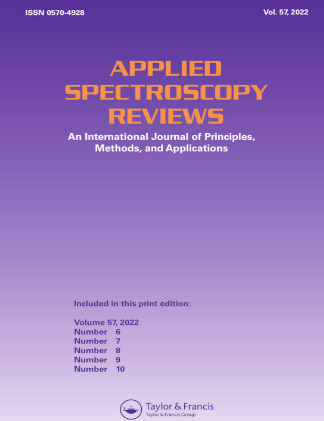用于表征生物油的先进光谱方法,使炼油厂能够在协同加工过程中降低燃料碳强度
IF 5.4
2区 化学
Q1 INSTRUMENTS & INSTRUMENTATION
引用次数: 2
摘要
摘要:通过热解将丰富的生物质原料转化为可再生的富碳油,是一种有希望的补充石油衍生燃料以支持减少温室气体排放的方法。然而,合成的生物油含有各种含氧化合物,这些化合物会产生酸性、化学和热不稳定性,并且与石油衍生燃料不混溶,因此需要进一步升级以获得燃料混合物。在现有炼油厂中共同加工生物油和石油衍生液体是一种潜在的短期、具有成本效益的方法,可以提高生物油的质量,同时降低炼油厂的碳强度。然而,生物油协同加工的一个原因是生物油成分的综合表征和形态有限。目前正在研究先进的分析技术,以识别生物油中难以捉摸的物种,使研究人员能够制定减轻催化剂失活剂和污染物的策略。本文简要介绍了几种常用的生物油分析方法及其局限性。此外,还讨论了目前正在开发的先进技术,以进一步阐明可能限制其最终用途的生物油成分。这将有助于了解生物油与石油衍生液体共同加工的技术和经济可行性,从而改善生物燃料混合原料生产的整体下游工艺。本文章由计算机程序翻译,如有差异,请以英文原文为准。
Advanced spectrometric methods for characterizing bio-oils to enable refineries to reduce fuel carbon intensity during co-processing
Abstract A promising approach for supplementing petroleum-derived fuels to support reductions in green-house gas emissions is to convert abundant biomass feedstocks into renewable carbon-rich oils using pyrolysis. However, the resultant bio-oils contain various oxygenated compounds that can impart acidity, chemical and thermal instability, and immiscibility with petroleum derived fuels, necessitating further upgrading to derive fuel blendstocks. Co-processing bio-oils and petroleum-derived liquids in existing refineries is a potentially near-term, cost-effective approach for upgrading bio-oils while reducing refinery carbon intensities. However, one cause for hesitation in co-processing bio-oils is limited comprehensive characterization and speciation of the bio-oil components. Advanced analytical techniques are currently under investigation to enable identification of elusive species in bio-oils, enabling researchers to develop strategies to mitigate catalyst deactivation agents and contaminants. This review provides a brief overview of several analytical methods commonly used to analyze bio-oils and their limitations. In addition, advanced techniques currently under development are discussed to further elucidate bio-oil components that may limit its end use. This will help inform the technical and economic feasibility of co-processing bio-oils with petroleum-derived liquids, therefore, improving the overall downstream processes for biofuels blendstock production.
求助全文
通过发布文献求助,成功后即可免费获取论文全文。
去求助
来源期刊

Applied Spectroscopy Reviews
工程技术-光谱学
CiteScore
13.80
自引率
1.60%
发文量
23
审稿时长
1 months
期刊介绍:
Applied Spectroscopy Reviews provides the latest information on the principles, methods, and applications of all the diverse branches of spectroscopy, from X-ray, infrared, Raman, atomic absorption, and ESR to microwave, mass, NQR, NMR, and ICP. This international, single-source journal presents discussions that relate physical concepts to chemical applications for chemists, physicists, and other scientists using spectroscopic techniques.
 求助内容:
求助内容: 应助结果提醒方式:
应助结果提醒方式:


